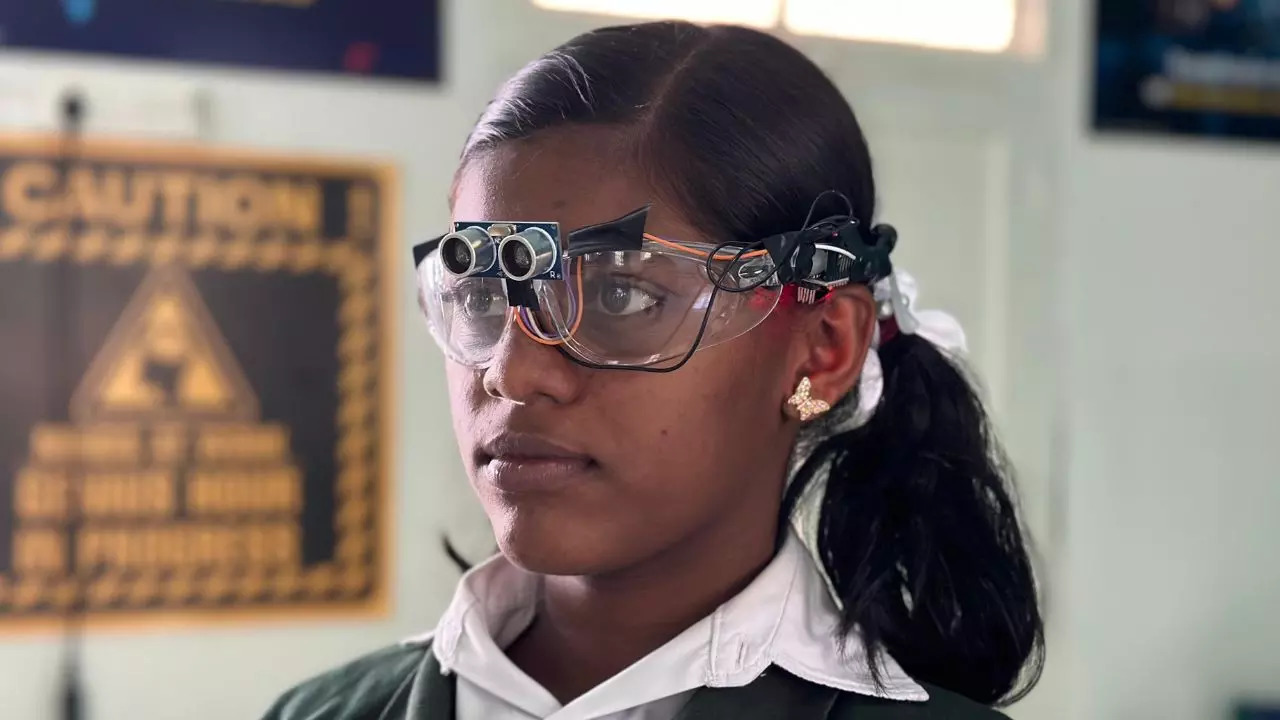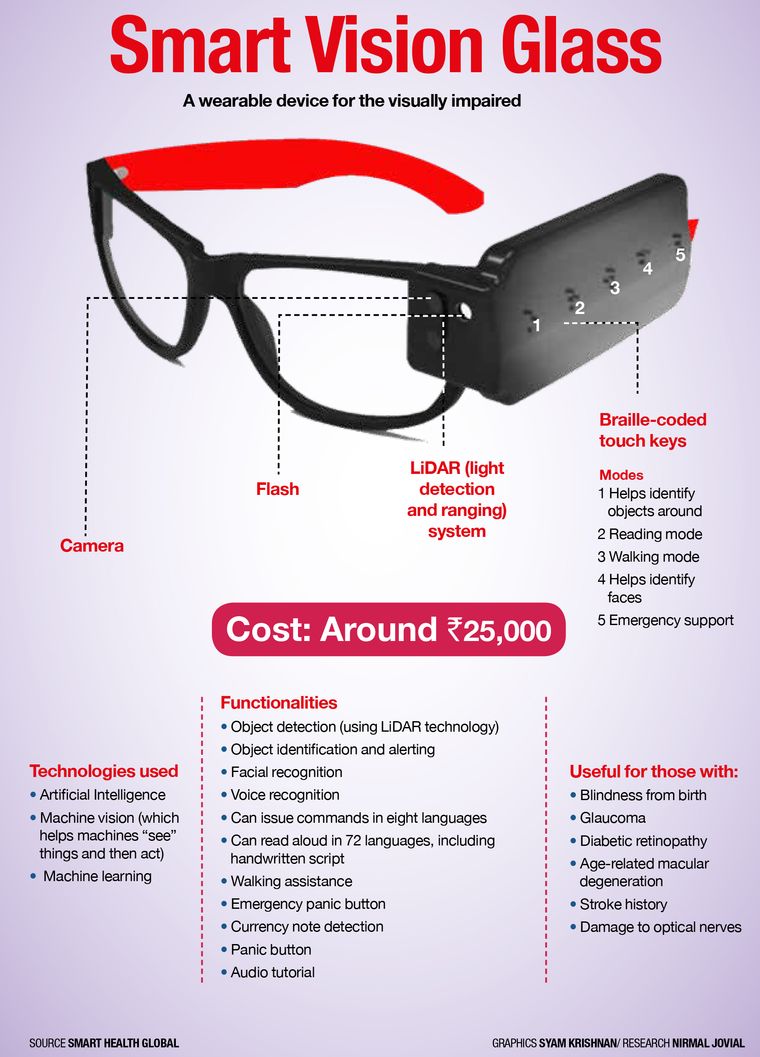Enhancing Ease Of Access Through Assistive Technology for the Blind
The assimilation of assistive technology for the blind represents an essential improvement in accessibility, fundamentally modifying how people browse their atmospheres and engage with culture. As we discover the diverse types of assistive tools and their substantial impacts on day-to-day living, it ends up being essential to analyze just how recurring technical innovations are reshaping the landscape of assistance for the blind community.
Review of Assistive Technology
Assistive innovation refers to a series of tools and software application created to improve the abilities of people with handicaps, consisting of those that are blind or visually damaged. This technology plays a crucial duty in advertising independence and improving the high quality of life for users. By offering alternate methods for accessing info and doing day-to-day tasks, assistive modern technology equips people to browse their environments better.
The advancement and execution of assistive modern technology welcome a variety of principles targeted at promoting availability. These concepts include user-centered style, which prioritizes the needs and preferences of the person, and the integration of innovation into day-to-day tasks. Such developments make certain that assistive devices are not only functional however also user-friendly and very easy to utilize.
Furthermore, assistive modern technology encompasses a varied range of options, from low-tech options like magnifiers to state-of-the-art developments such as screen viewers and Braille display screens. The ongoing evolution of this area is driven by the requirement to attend to the special challenges faced by individuals with aesthetic problems (Wearable technology for low vision). As technology proceeds to advance, the possibility for enhancing accessibility and promoting inclusivity stays encouraging, eventually adding to a more equitable society

Kinds Of Assistive Gadgets
Various types of assistive gadgets are available to support people that are aesthetically impaired or blind, each made to address particular demands and challenges. These gadgets can be generally classified into three major kinds: low-tech, mid-tech, and high-tech solutions.
Low-tech gadgets include items such as magnifiers, Braille tags, and tactile maps. These are fairly easy devices that improve the user's capability to connect with their setting without calling for complex innovation.
Mid-tech gadgets typically involve much more advanced functions, such as digital magnifiers and portable Braille note-takers. These devices can provide functionalities like speech outcome, permitting customers to accessibility details extra effectively.

Influence On Daily Living
The schedule of various assistive gadgets dramatically boosts the high quality of life for people that are aesthetically impaired or blind, influencing their day-to-day living in profound ways. By integrating technologies such as display viewers, try these out Braille presents, and audio description solutions into their routines, individuals obtain greater autonomy and self-reliance. These devices help with accessibility to information, enabling individuals to do daily tasks, such as reviewing emails, browsing public spaces, and enjoying media content.
Additionally, assistive gadgets encourage people to involve more fully in social interactions and neighborhood tasks. The capability to make use of smartphones geared up with accessibility functions enables for smooth interaction and link with others. This connection cultivates a sense of belonging and reduces feelings of seclusion.
In expert setups, assistive modern technology sustains productivity by allowing people to total work jobs effectively. Devices like voice acknowledgment software and specialized magnifying tools enable individuals to join the labor force on equivalent footing with their sighted peers.

Improvements in Technology
Current technological improvements have considerably transformed the landscape of tools readily available for people that are blind or visually damaged. The integration of expert system (AI) and artificial intelligence has actually offered rise to applications that boost navigation and item acknowledgment. Smartphone applications can currently utilize AI to recognize and define environments in real-time, offering customers with useful contextual details.
Furthermore, developments in haptic innovation have brought about the advancement of clever walking canes outfitted with sensors that find obstacles and offer tactile feedback. This encourages individuals to navigate their atmosphere with raised confidence and self-reliance. Moreover, developments in text-to-speech software program and braille displays have actually enhanced the ease of access of electronic material, enabling for smooth interaction with various media.
Wearable technologies, such as clever glasses, are also making strides in aiding visual disability. As technology continues to advance, the potential for even more transformative devices remains on the perspective.
Future Trends and Innovations
As innovation quickly advances, the future of assistive devices for people that are her response blind holds immense pledge. Developments in artificial intelligence (AI) and equipment knowing are positioned to revolutionize the means blind individuals engage with their atmospheres. AI-driven applications are being established to enhance item recognition, permitting users to identify and navigate their surroundings with better convenience and precision.
Moreover, improvements in haptic comments innovation are enabling the production of responsive maps and navigating help that give real-time info with touch. These technologies not just boost flexibility but also foster self-reliance. Additionally, wearable gadgets equipped with augmented fact (AR) attributes are arising, providing users visual info via sound summaries, thereby connecting the void between the physical and digital globes.
Additionally, the assimilation of clever home modern technology provides new opportunities for access, allowing individuals to regulate their living atmospheres with voice commands or smartphone applications. As collaboration between tech designers and the blind community proceeds, the emphasis on user-centered layout will certainly make certain that future technologies are customized to satisfy the one-of-a-kind needs of this populace (Wearable technology for low vision). The trajectory Read More Here of assistive modern technology guarantees an extra inclusive and empowering future for individuals that are blind
Final Thought
Finally, assistive technology plays a critical function in boosting access for individuals with visual impairments. The diverse selection of tools, consisting of screen visitors and clever walking canes, substantially improves daily living and fosters independence. Continual innovations in innovation and user-centered layout guarantee that these devices cater successfully to the distinct demands of the blind area. As technologies progress, raised inclusivity and empowerment can be expected, eventually improving the high quality of life for those affected by visual impairments.
The integration of assistive modern technology for the blind represents a critical innovation in accessibility, basically changing how individuals browse their environments and involve with culture.Assistive technology refers to a variety of tools and software designed to enhance the capabilities of people with disabilities, consisting of those who are blind or visually impaired. Wearable technology for low vision.As innovation quickly progresses, the future of assistive devices for individuals who are blind holds immense assurance. The trajectory of assistive technology assures a much more comprehensive and empowering future for people that are blind
In final thought, assistive technology plays a vital duty in improving ease of access for individuals with aesthetic problems.